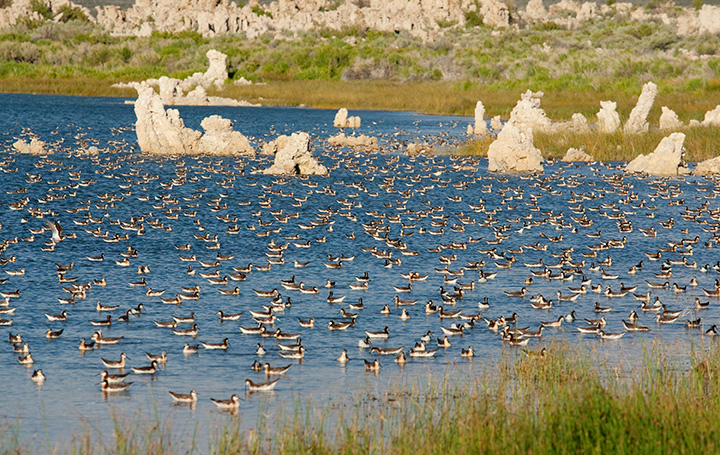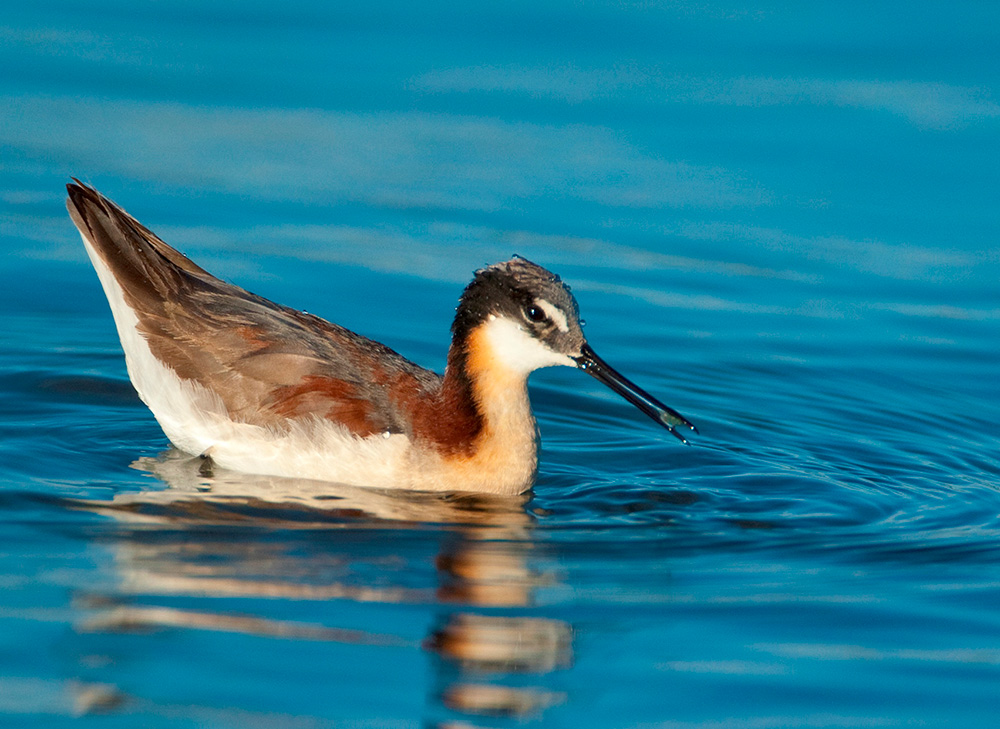
This post was written by Ellie Neifeld, 2019 Mono Lake Intern.

Join us on Wednesday, August 21 at 4:00pm in the Mono Lake Committee gallery for Refreshments with Refreshing ‘Ologists. Ryan Carle, conservation scientist, will be here to discuss cutting-edge research on phalaropes. If you can join us for this free talk, please register here!


Phalaropes are tiny shorebirds that make impressive migrations between North and South America. Mono and other saline lakes—which are nearly universally threatened by climate change and water diversions—are critical migratory refueling stops for them. Mono is famous for its phalaropes, but there has been virtually no research on their population trends or status here (or anywhere else) for the last 30 years. Ryan Carle will discuss what we know and don’t know about phalaropes, the status of their habitat in South America, new research occurring at Mono Lake this year, and the recent formation of an international group focused on phalarope conservation and research.
Ryan Carle works on seabird and shorebird conservation science with the non-profit Oikonos Ecosystem Knowledge. He has worked for the last ten years on seabird conservation, including work on auklets, cormorants, and gulls on the California coast and endangered shearwaters in Chile. Ryan is originally from Lee Vining and is excited that his phalarope work has brought him back home.
